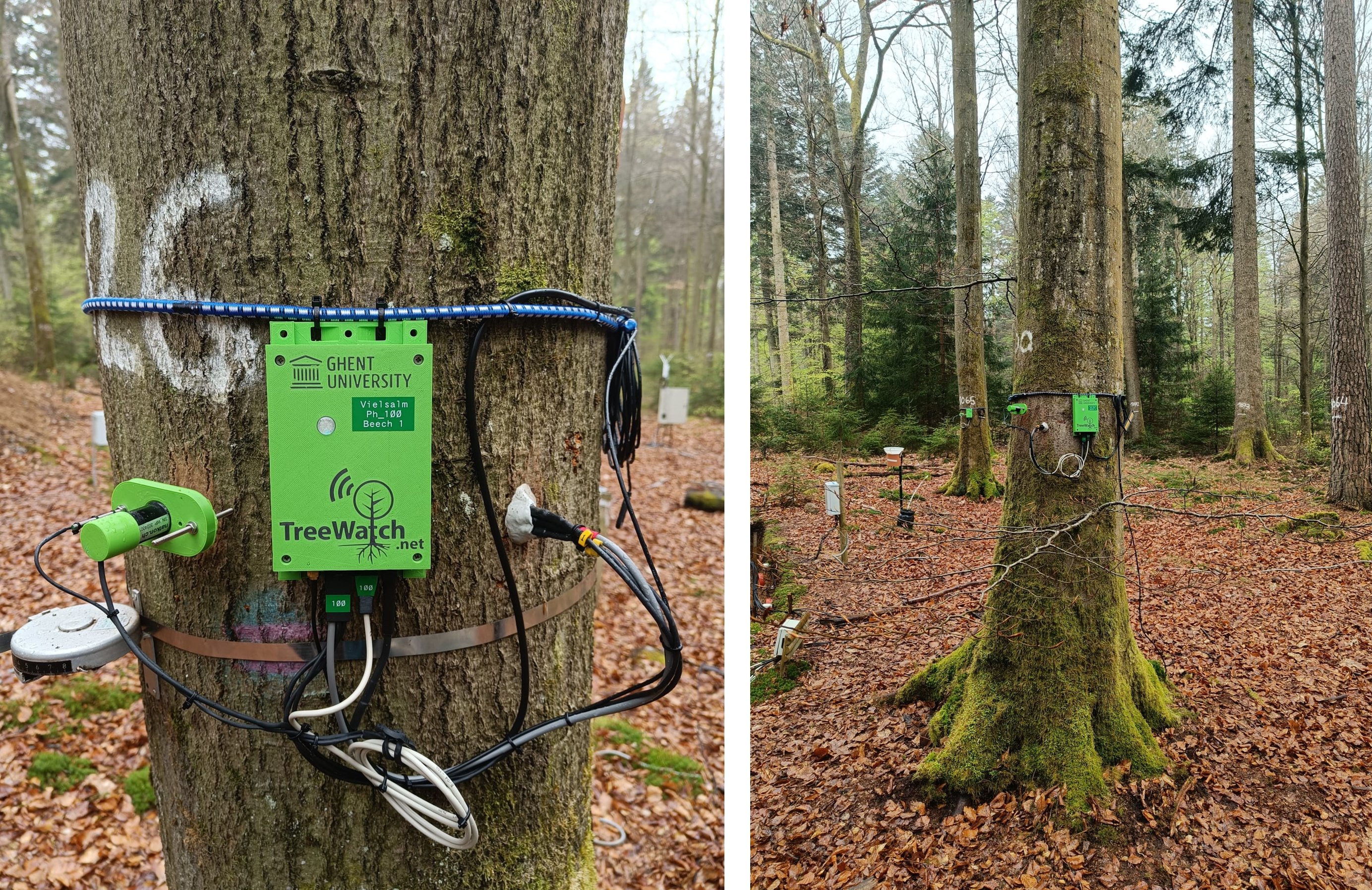Vielsalm
ICOS research site
The ICOS Vielsalm research site is a mature (80 to 110 y/o), mixed forest made up of coniferous (douglas fir, spruce, silver fir) and deciduous (beech) plots. It has been continuously monitored since 1996 thanks to funding from the Fonds National de la Recherche Scientifique (FNRS), supporting a diverse range of research themes including: tree vitality, soil respiration, site water balance, CO2 advection and diffusion, VOC exchanges, soil carbon content, nitrogen deposition, dissolved organic compounds dynamics, etc.. More information on this specific ICOS site can be found here.
Plant Water Pump project
Forests are facing increasing intensity and frequency of drought occurrences, making them more vulnerable to drought-induced mortality. Understanding the interplay of plant traits that lead to greater resistance to water deficit is crucial to identifying species adapted to future climate scenarios. To address this challenge, the Plant Water Pump (PWP) project monitors sap flow and trunk diameter variations in four Fagus sylvatica (beech) trees at the ICOS Vielsalm research site, using the TreeWatch technology. Additionally stem and soil water status, as well as osmotic potential dynamics are being monitored. The high frequency monitoring data coupled with point measurements, will allow the characterization of the interaction between different mechanisms in response to water availability for these trees. This project is supported by the European Research Council (ERC), Université catholique de Louvain and FNRS. More information on this and other projects of the PEPA laboratory can be found here.

Beech (Fagus sylvatica)
Beech is native to temperature Europe, Asia and North America but only reached North-West Europe long after the ice age (ca. 2000 B.C.). It can reach heights of up to 40 m and an age of 200-300 year. Beech has a thin (1-2 mm), smooth and gray bark which is very sensitive to 'sun burn'. Flowers from April till May, around the same time that the leaves appear. Its fruits (beechnuts) are edible. Beech grows well in aerated, moist, calcareous and loamy soils. It can not tolerate high groundwater levels and poor sandy soils. Beech is a shade-tolerant climax species and is very competitive with oak (Quercus robur L.).
Tree location
The monitored trees are located in the ICOS research site in Vielsalm. The satellite image below shows the exact location of the monitored trees.
